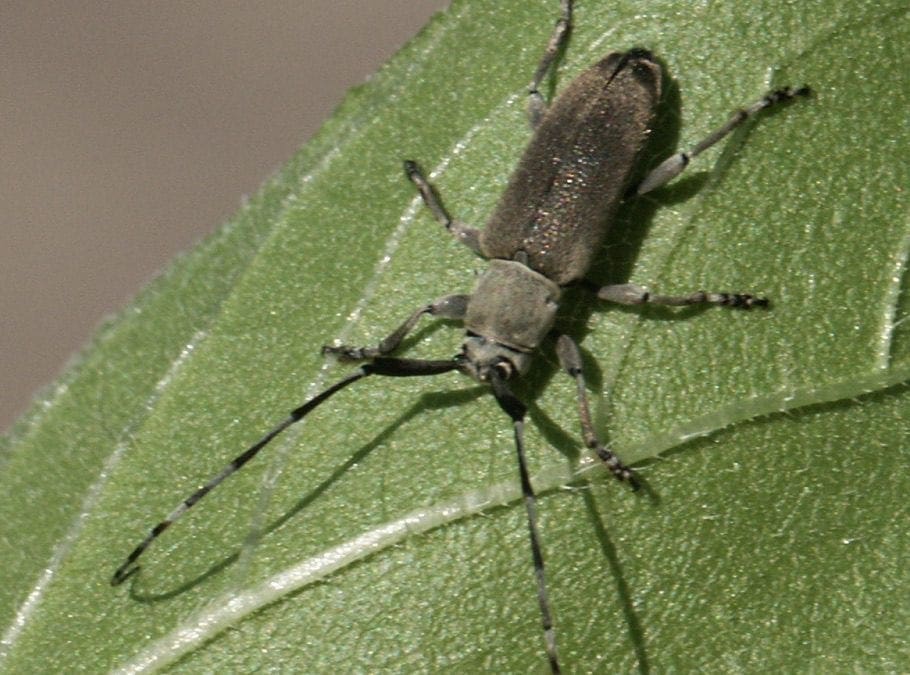Weeds, bugs, slugs, you name it – farmers deal with more than their fair share of pests. Proper management and prevention is key to growing a healthy, viable and sustainable crop. Knowing and understanding the factors contributing to your pest problem are the first steps to controlling weeds and insects.
Several pests are going to be prominent throughout Delaware this season, according to Cory Whaley, University of Delaware extension agent.
Palmer amaranth: The weed to watch
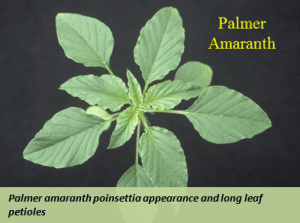 O
O nce a problem only in the south, Palmer amaranth is the weed that should be on the top of every grower’s mind in terms of prevention and control, says Whaley.
nce a problem only in the south, Palmer amaranth is the weed that should be on the top of every grower’s mind in terms of prevention and control, says Whaley.
The fast-growing weed is new to the area and is slowly spreading across the state. As farmers become aware of its presence, they must adapt their practices to target and eliminate the weed.
Because Palmer amaranth is resistant to glyphosate and ALS chemistries, incorporating multiple modes of action into your pest management program is crucial when dealing with this weed.
“More folks are including multiple modes of action in their program in both their pre- and post-emergence applications,” Whaley says. “For a few years, we got away from pre-applications and moved on to just post-emergence herbicide, but it’s important to fight weeds early on to start clean.”
Slugs: Limit time in the seedling stage
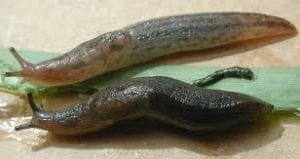 Some pests that Delaware growers may encounter this year are more difficult to control – one of them being slugs. Gray garden and marsh slugs are the two most common species of slugs found in Mid-Atlantic soybean fields.
Some pests that Delaware growers may encounter this year are more difficult to control – one of them being slugs. Gray garden and marsh slugs are the two most common species of slugs found in Mid-Atlantic soybean fields.
This year’s cool, wet spring in Delaware produced favorable conditions for slug infestations, according to David Owens, University of Delaware extension entomology specialist.
In these conditions, the seed slot is not closed, leaving the seed vulnerable to damage from slugs before it emerges and the first leaf appears. Owens says the faster the seed can produce its first true leaf, the better.
“The shorter the amount of time that soybeans are in the seedling stage, the shorter amount of time slugs have to attack them,” Owens says.
Dectes Stem Borer: Prevent stem damage to preserve crop
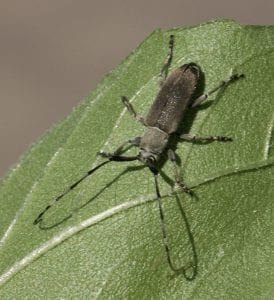
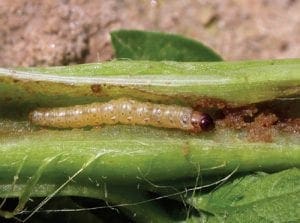 Dectes stem borer lays its eggs in soybean stalks throughout June and July.
Dectes stem borer lays its eggs in soybean stalks throughout June and July.
These pests cut the stalk of the soybean so the plant falls to the ground. This is problematic during harvest because a combine won’t pick up the fallen plants.
Although no insecticides have been labeled for control of these pests, there are several cultural practices that can be implemented to limit damage, such as prioritizing infested fields for early harvest before larvae can cut the stems. Narrow rows can also make it easier for the combine to snag fallen plants. Crop rotation can help prevent the larvae from overwintering in the field, Owens says.
Key Management Practices
No matter what pest you may face, Whaley and Owens agree there are five key practices that you should incorporate into your pest-management plan.
- Stop to scout. It is key to scout your fields to understand the level of infestation of pests and to determine how to best manage them. Owens recommends to scout fields early on to determine if you have a problem that needs to be treated then. This will potentially save you an application later in the season.
- Know your thresholds. Know the thresholds of common pests to make pesticide application decisions more efficient. Determine if yield saved by making that application outweighs the cost of application before treating fields.
- Pick the right varieties. At seed-selection time, choose soybean varieties that offer a good defensive package against the diseases that you foresee posing the biggest threat throughout the season.
- Use multiples modes of action. To help ward off pests while limiting the risk of insecticide or herbicide resistance, use pesticides with multiple modes of action, Whaley says. This ensures that technologies remain available for use in the future.
- Start soybeans strong. A strong soybean plant with good soil fertility and a healthy canopy can help set the crop up for success against potential pests. A healthier canopy shades out weed germination. Planting into favorable conditions that promote quick growth helps give the plant a chance at developing a good stand.

